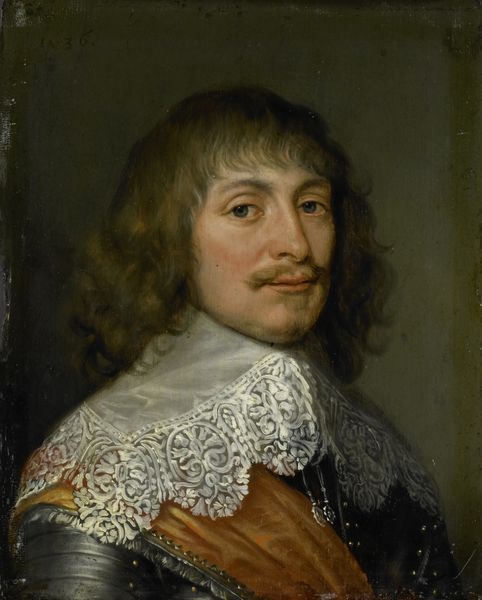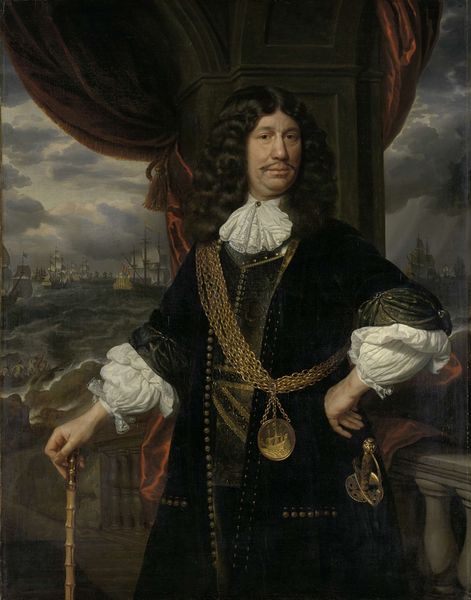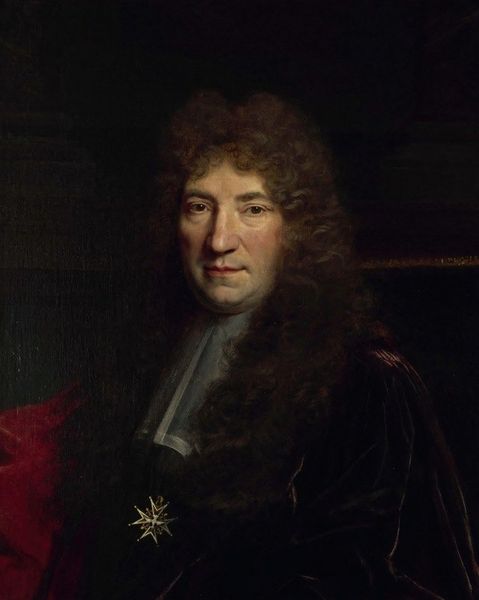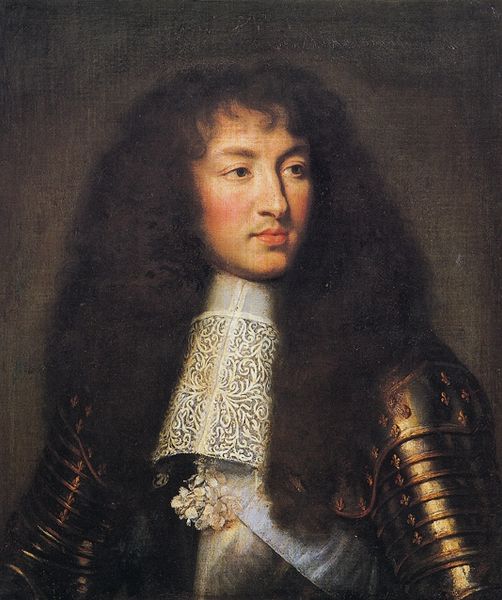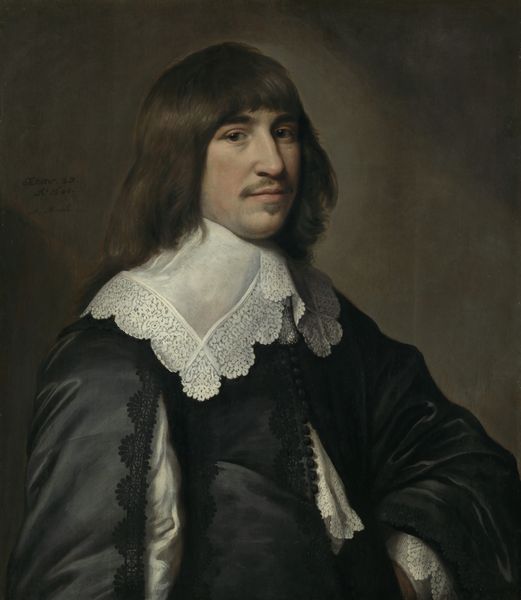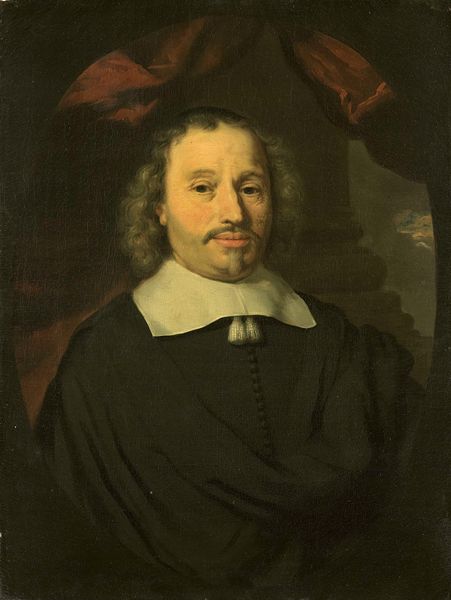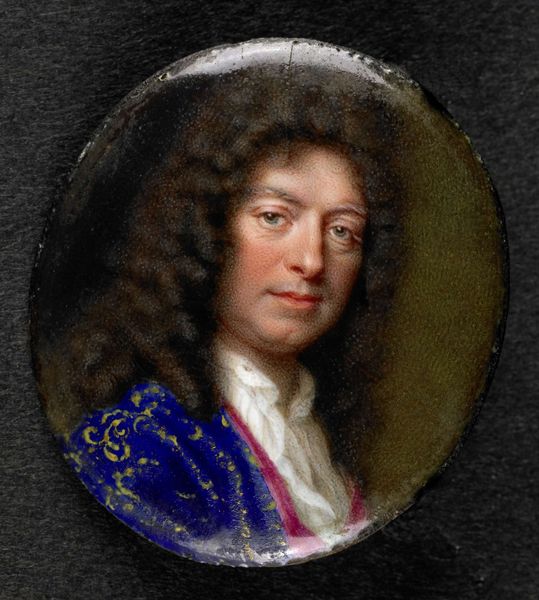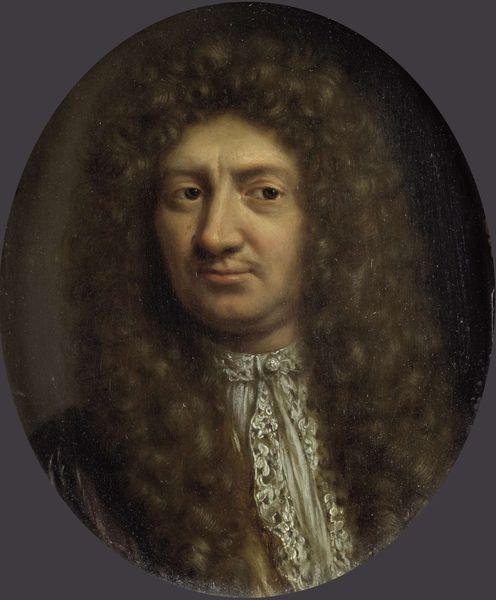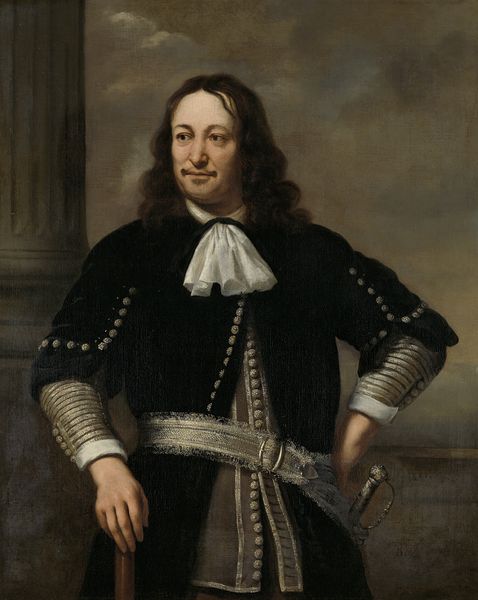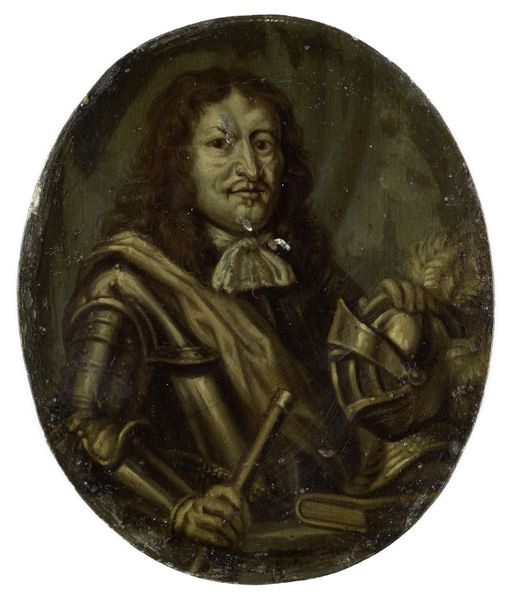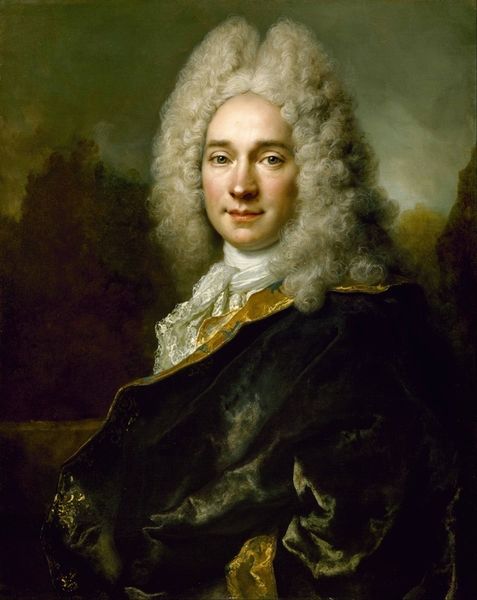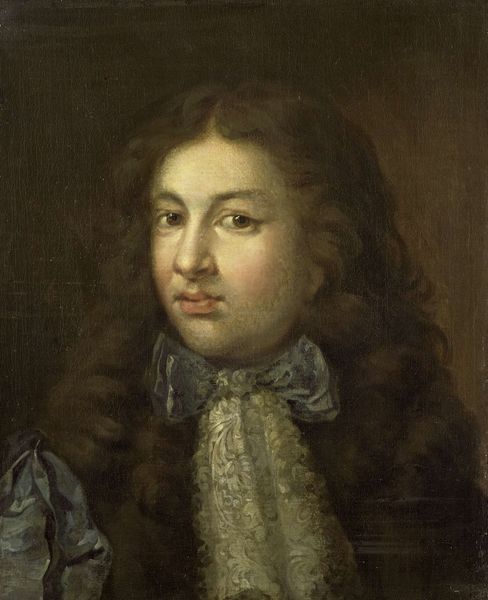
painting, oil-paint
#
portrait
#
figurative
#
baroque
#
painting
#
oil-paint
#
figuration
#
history-painting
#
academic-art
Copyright: Public Domain: Artvee
Editor: Here we have Gerard van Honthorst's "Portrait of a Gentleman, Probably Sir Thomas Aston," created sometime between 1600 and 1646 using oil paint. I find it really interesting how the delicate lace contrasts with the dark, almost somber background. What symbols do you see at play here? Curator: The lace, for me, is not just adornment, but a potent symbol of status, refinement, and even vulnerability. Its intricate patterns, repeated and delicate, speak to the man's position but also a certain fragility of beauty and societal expectations. It’s contrasted by what appears to be dark armor which hints at a masculine ideal of strength. Editor: I hadn't thought of the armor! Does the juxtaposition mean something specific for this period? Curator: Consider it this way: how often do you see individuals defined solely by strength or only by their gentility? The symbols work together to paint the duality of man at the time, with internal conflicts, and society expectations pressing from the outside. Look also at the warm colors used on his face; what might that symbolize? Editor: Perhaps the use of warm tones hints at inner life or passions contrasting with the cool exterior he presents? I am used to equating masculinity with, more stereotypically, raw power, but perhaps what van Honthorst is doing here, is suggesting that it's okay to feel all types of emotions at the same time. Curator: Exactly! It’s an insightful portrayal, revealing how symbols weave together a story of personal identity within a precise moment in time, with continuity still resonant today. Editor: That's so interesting, looking at it again, it's like he's inviting the viewer into his own understanding of his place in the world and in history.
Comments
No comments
Be the first to comment and join the conversation on the ultimate creative platform.
